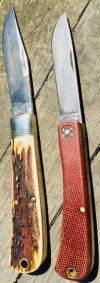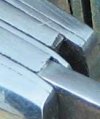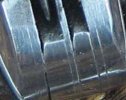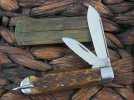people who have owned knives from several makers in this space and know what is nornal, what they can fix by cleaning or filing something here or will become better over time.
^^ This has been my approach. I have somewhere in the vicinity of 100 traditional knives, almost all purchased either never-opened directly from dealers or used from the Exchange forums here, or the big auction site. Never had a single one that I thought needed to go back to a dealer or be sent off to the factory.
Some were just fine as received. Many had little things that can easily be either ignored, or fixed with very basic skills and tools.
There are many posts (not necessarily in this thread, but just in general) where people point out things as flaws that I just either never noticed, noticed but didn't care about, noticed but thought it was perfectly normal, noticed and fixed myself, or noticed and lived with.
I come from the days before photographing everything with high-definition macro zoom lenses was common, and where taking a file, steel wool, sandpaper, metal polish, and sharpening stones to a pocket knife is just normal maintenance and tinkering. So maybe people's tastes have become exceptionally refined, and I am just too uninformed to recognize what are clearly flaws. Tell ya what, though, I am a lot happier with my purchases than those that demand utter perfection from sub-$100 factory produced pocket knives.
This is not a shot at the OP - if you got a knife that has a constellation of issues that make you unhappy, then by all means send it back for a refund or send it in for repair. The only thing you mentioned that would be a big problem for me was that weak spring. But I'd make the effort first to give it a good cleaning and lubing to see if that fixed it.
I got a gorgeous GEC 15 Boys Knife from Mike at CollectorKnives, that I thought was going to be the first ever I had to send back. The pull on the main blade was just horrendous. I thought I was going to need pliers to open it. However, a good thorough cleaning of the joint in hot soapy water, followed by good lubrication, and then working the blade back and forth (taped for safety) and I felt a little "crunch" as some piece of grit from the manufacturing process finally gave way and came out, and then that knife was just perfect. Went from having to force it to full open and to full closed, to having ideal walk and talk and a nice firm snap.
Though this is not the forum to discuss it, I had a Zero Tolerance knife that was exceptionally hard to open using the flipper, which took over a month or frequent opening to break in, but now it works great.
So keep in mind that any new pocket knife may have "some user adjustment required."





